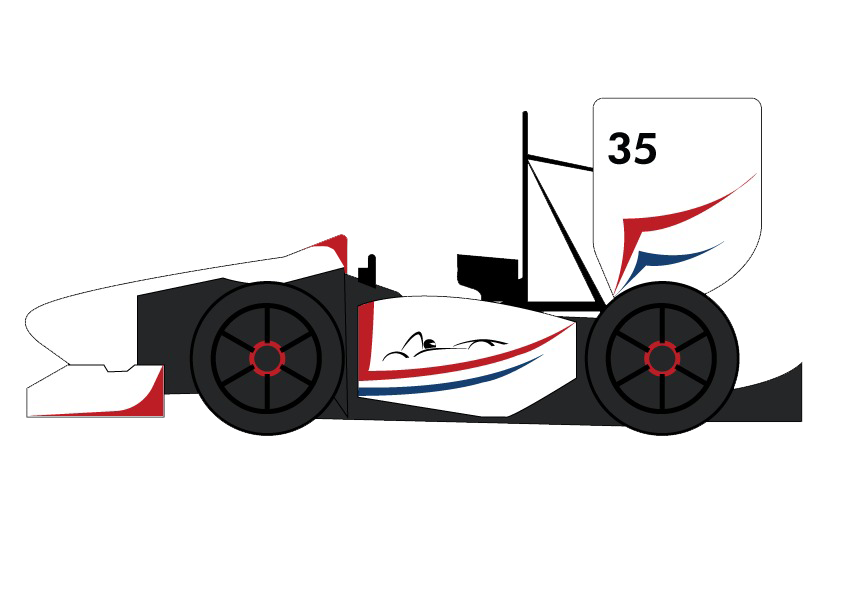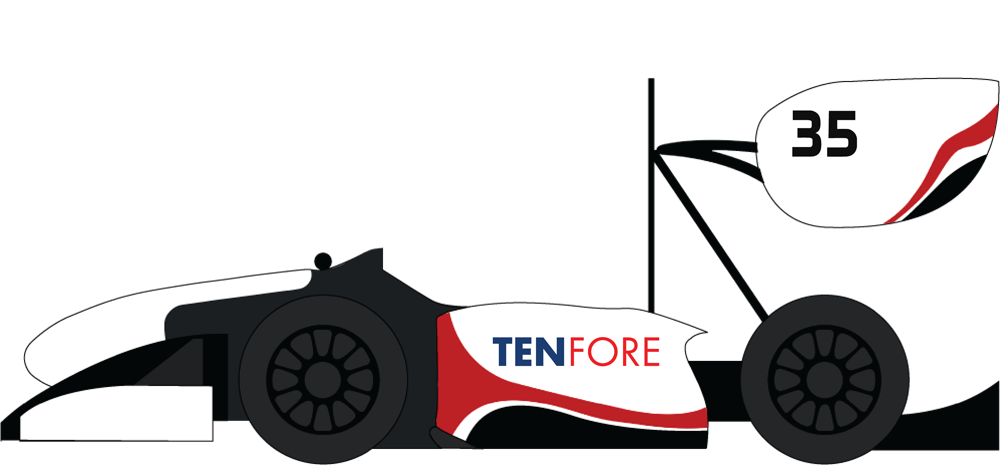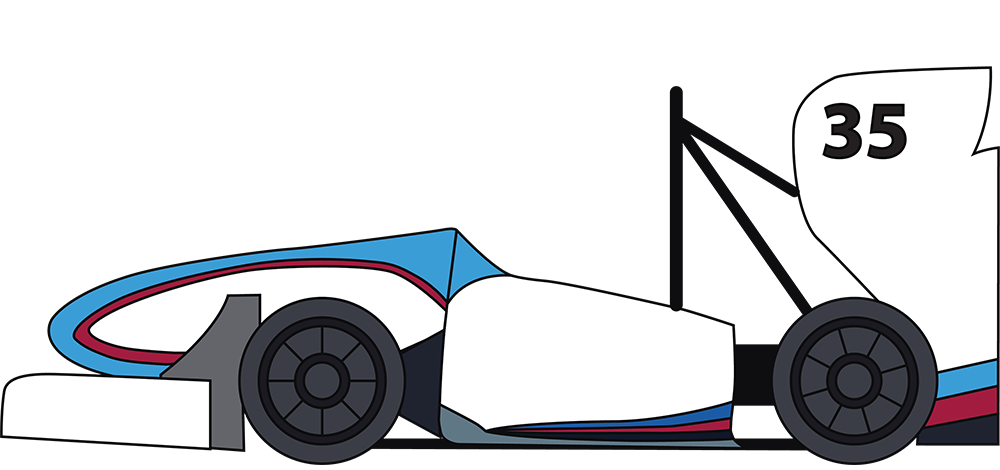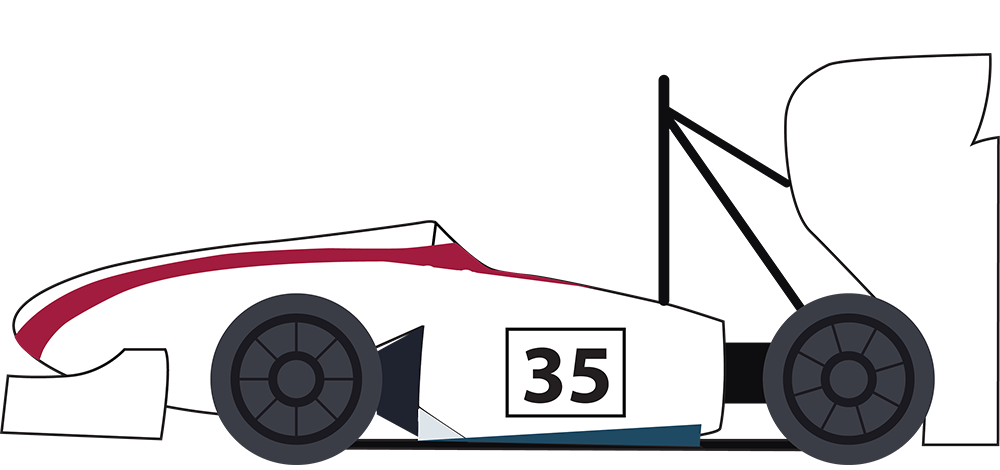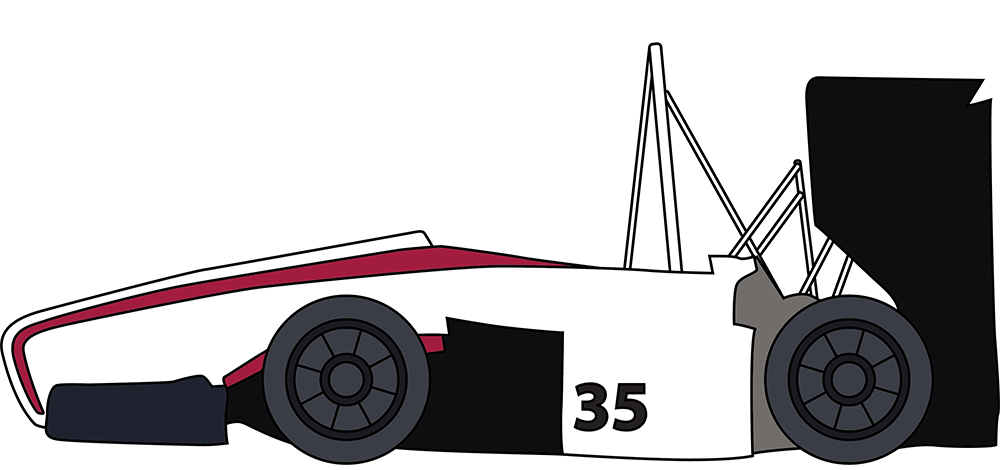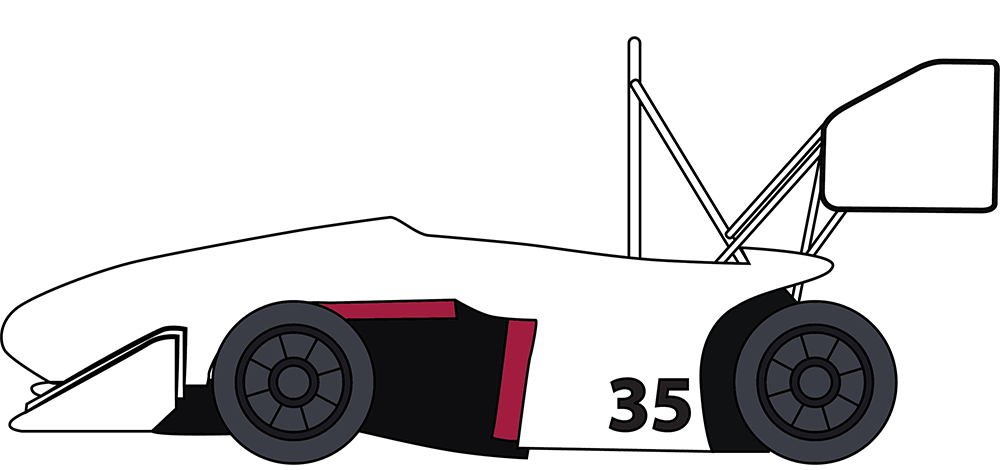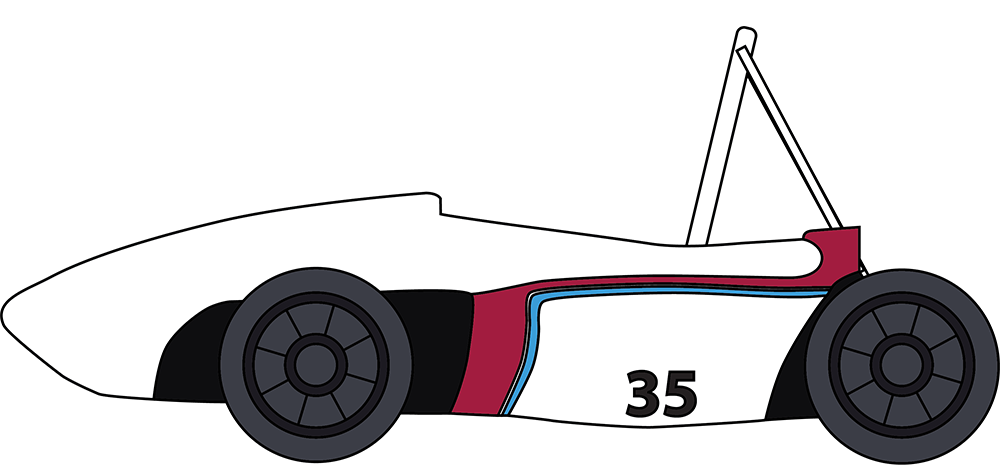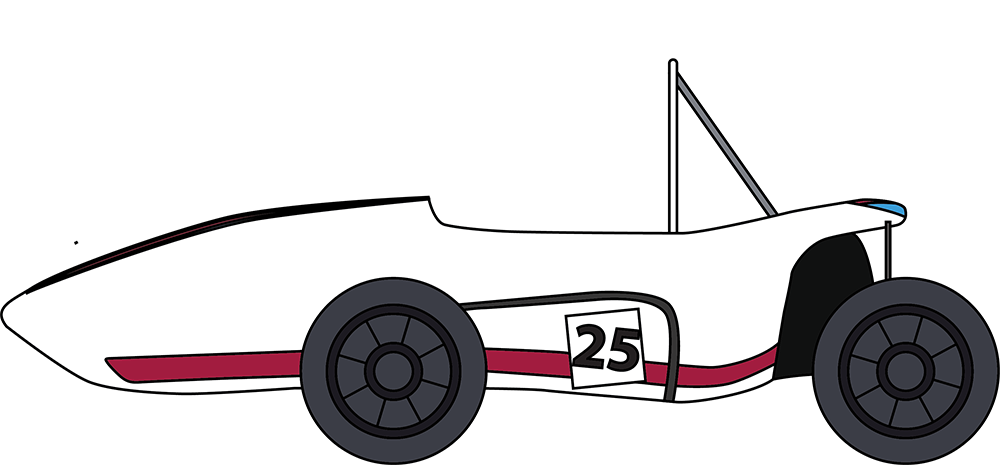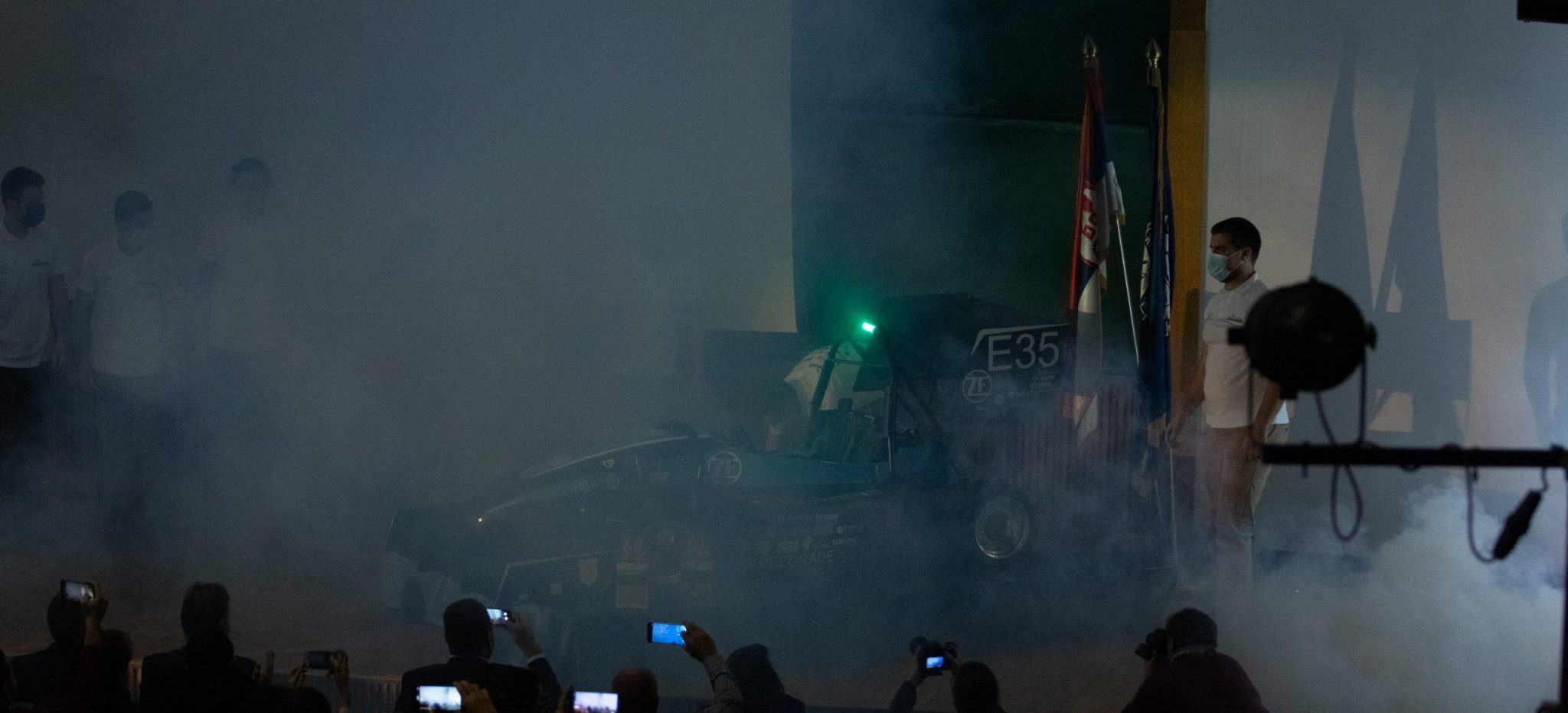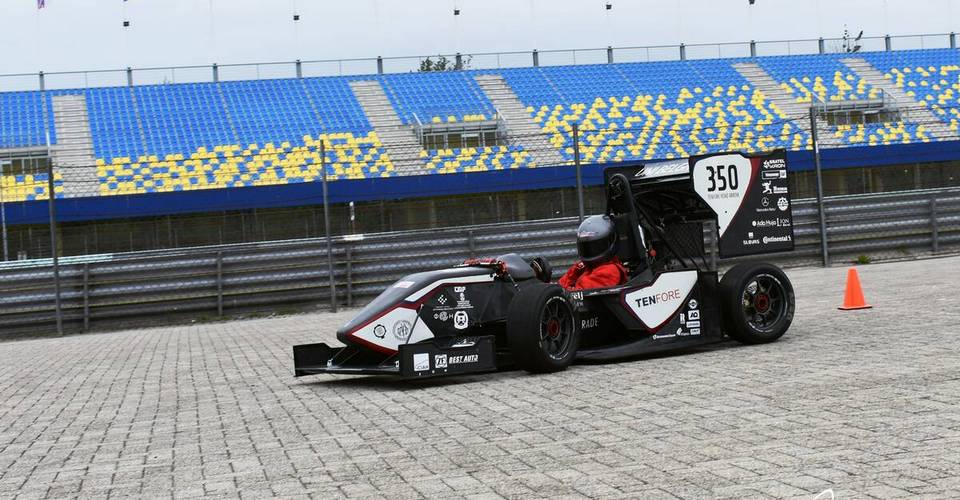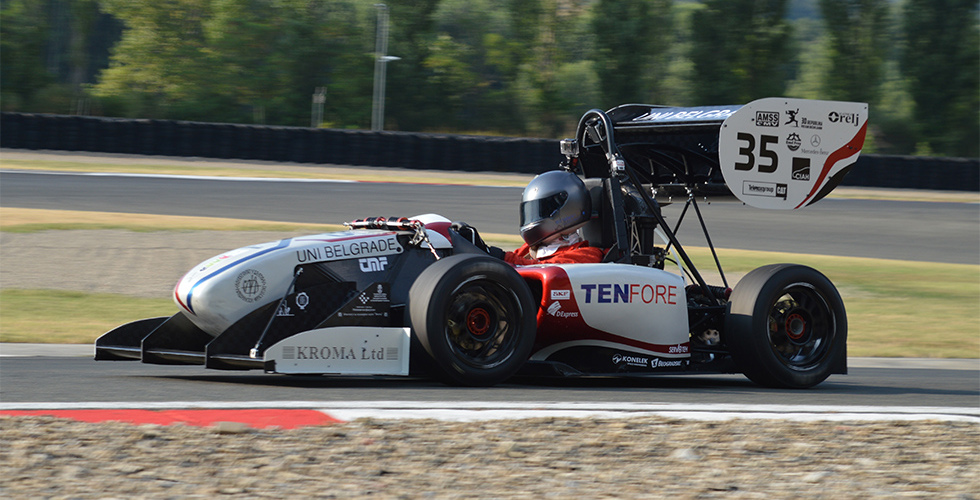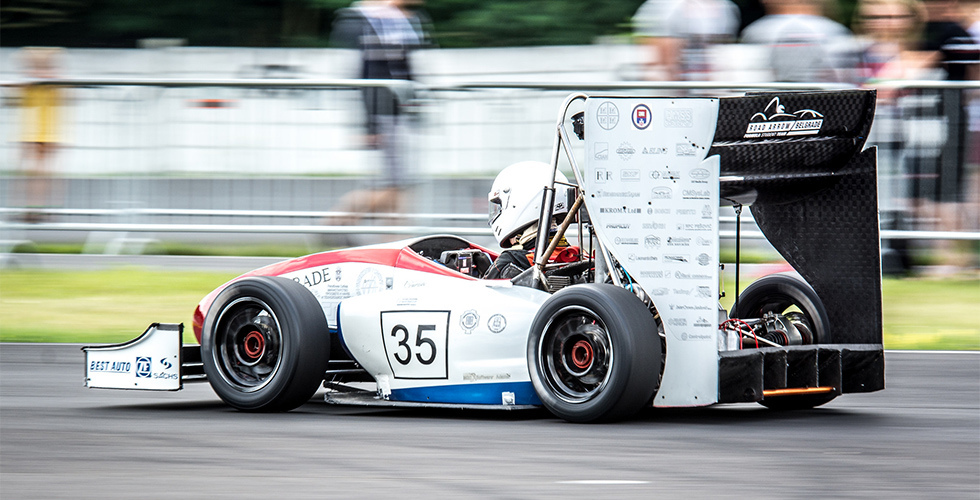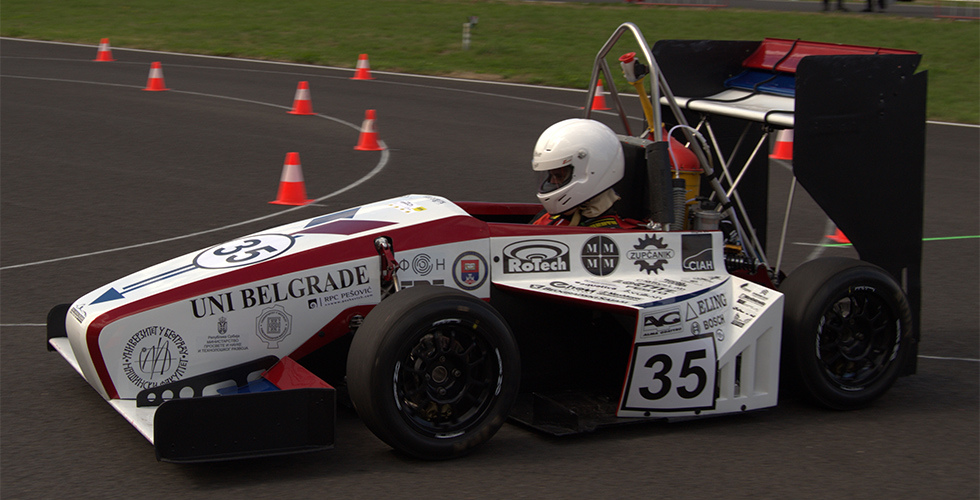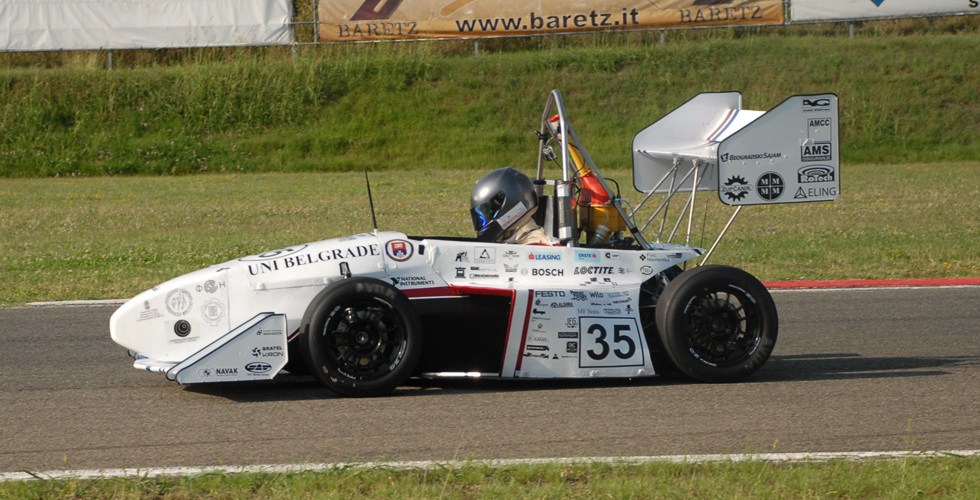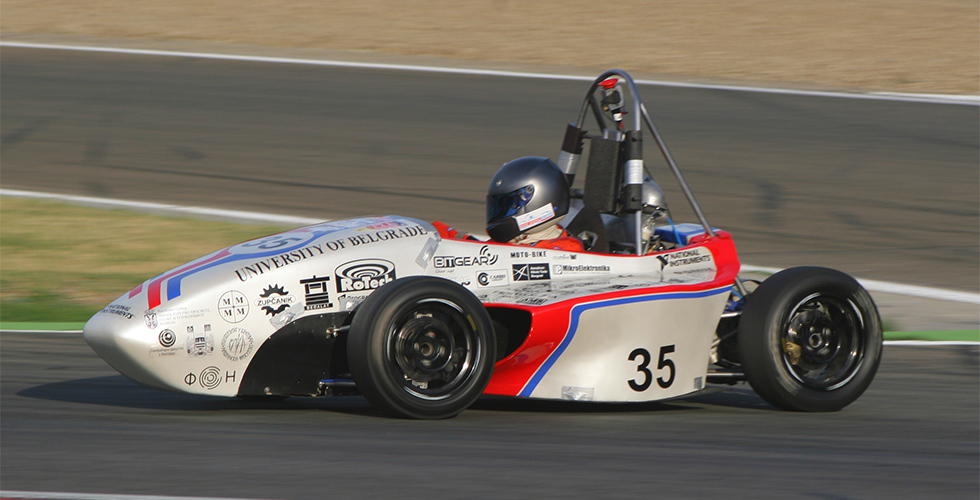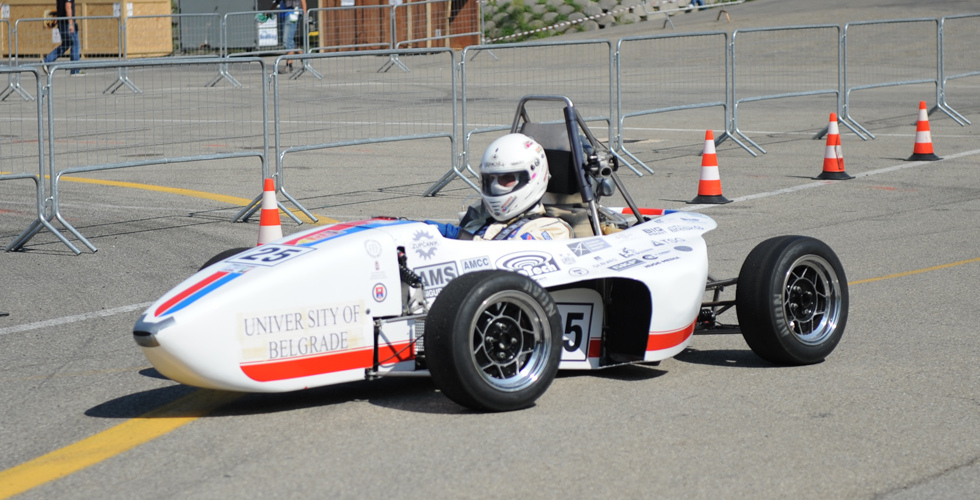Vehicles
How do students make a race car? It starts with a desire, then an idea and that idea leads to the design, and manufacture of the vehicle.
DESIGN
The moment when an engineer first sees the car he worked on, not the one when it’s made, but when it’s designed and when it is decided that this is the final look of the vehicle. Behind this exterior stands the designing of all the parts on the car, starting with the chassis, transmission, steering, suspension, braking, the reservoir and oil sump, cooling system, intake and exhaust manifold, to the aero package and ergonomics.
An important point is that every part that is designed is subject to the rules laid out by the Formula Student Rules, otherwise the car cannot compete. Therefore, the design process is very demanding as it tasks students to stay within the framework of the rules and make the best possible vehicle.


MANUFACTURING
Of over 1000 parts that make up the car, only the parts that cannot be made are bought; the engine, dampers, tires and wheels. All other parts are designed by the students and are made in the workshop, university laboratories or by companies with whom we have established a long-standing, successful cooperation.
We put an emphasis on testing the materials we work with, so that every part has the best possible characteristics and ultimately contribute to better the vehicle performance. Since 2016 we have successfully been manufacturing hollow composite construction parts out of carbon fibers and epoxy resin. In the 2017 team members themselves started to manufacture certain plastic parts with 3D printer.
BUSINESS PLAN & COST REPORT
Along with vehicle’s designing and manufacturing, it is important to create a Business Plan. First, the vehicle’s price is determined, through detailed analysis of material and parts, manufacturing process and assembly, followed by market competence having in mind vehicle’s characteristics and estimated value.
After this there are market analysis and product placement proposal with marketing strategy, and along the way team has to evaluate what volume of production is the most economical/cost-effective for the existing production technology. Cost report and Business plan are created for every vehicle, and for the conclusion plan has data about return on investment at the end of every/each year, starting with the year of investment.


TESTING
After the vehicle is manufactured and assembled it’s testing out on the circuit starts. It is necessary to push the vehicle to it’s boundaries, so all deficiencies are revealed and eliminated before the competitions. Every system has to be subjected to detailed analysis. Driver’s task is to notice even the slightest deviations from desired vehicle’s behavior on the circuit so that later they can work together with their teammates on setting the vehicle for every discipline.
This assignment has become easier in the last few years, because we have the possibility to keep the track of data from the sensors in the real time with the help of telemetry unit that our engineers designed on their own. First tests start with nominal vehicle’s setting, then after the vehicle has been driven parameters are measured, and the vehicle is being adjusted all over again until satisfying results are obtained.

